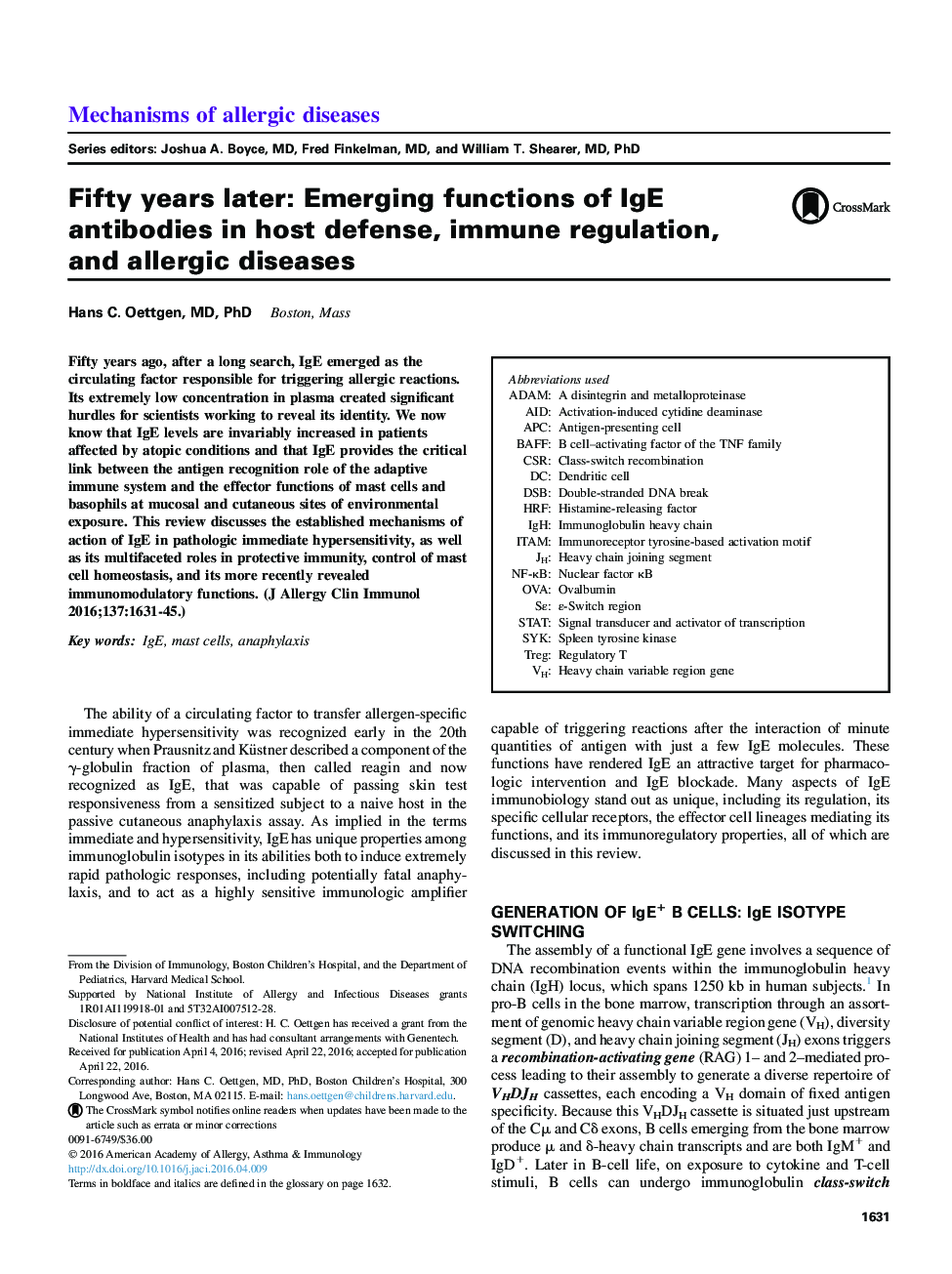| Article ID | Journal | Published Year | Pages | File Type |
|---|---|---|---|---|
| 6062464 | Journal of Allergy and Clinical Immunology | 2016 | 15 Pages |
Abstract
Fifty years ago, after a long search, IgE emerged as the circulating factor responsible for triggering allergic reactions. Its extremely low concentration in plasma created significant hurdles for scientists working to reveal its identity. We now know that IgE levels are invariably increased in patients affected by atopic conditions and that IgE provides the critical link between the antigen recognition role of the adaptive immune system and the effector functions of mast cells and basophils at mucosal and cutaneous sites of environmental exposure. This review discusses the established mechanisms of action of IgE in pathologic immediate hypersensitivity, as well as its multifaceted roles in protective immunity, control of mast cell homeostasis, and its more recently revealed immunomodulatory functions.
Keywords
IgHdouble-stranded DNA breakITAMActivation-induced cytidine deaminaseHRFTregAPCOVANF-κBDSBCSRIgEADAMSTATAnaphylaxisantigen-presenting cellOvalbuminBAFFSyka disintegrin and metalloproteinaseImmunoglobulin heavy chainDendritic cellspleen tyrosine kinasehistamine-releasing factornuclear factor κBMast cellsSignal transducer and activator of transcriptionRegulatory T immunoreceptor tyrosine-based activation motifclass-switch recombinationAID
Related Topics
Life Sciences
Immunology and Microbiology
Immunology
Authors
Hans C. MD, PhD,
